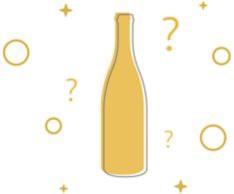Rosé wine isn't just a wine; it's become a lifestyle choice for many. With its beautiful pink hue and refreshing taste, it’s no wonder its popularity is soaring. But with growing competition, effective selling strategies are crucial to stand out.
Understanding Rosé Wine
Rosé isn't just red and white combined. It has unique characteristics that set it apart. Understanding its distinct flavor profile and production methods can make all the difference when selling this charming wine.
Types of Rosé Wine
Rosé comes in various types, each appealing to different palates:
Dry Rosé: Known for its crisp and refreshing taste, often with hints of strawberry and melon.
Sweet Rosé: Offers a sweeter, fruitier profile, with flavors like peach and raspberry.
Sparkling Rosé: Effervescent and lively, it combines the fizz of sparkling wine with the fruity notes of rosé. Think of champagne with a twist.
Flavor Profiles
Rosé wines are versatile and can range from light and floral to robust and fruity. Common flavor notes include:
Strawberry: A staple in many rosés, adding sweetness and brightness.
Watermelon: Often found in lighter rosés, providing a refreshing experience.
Floral: Notes like rose and violet can add elegance and complexity.
These flavors cater to those seeking a wine that is both refreshing and sophisticated.

Target Market Analysis
Knowing your audience is half the battle. Let’s explore the ideal customer segments for rosé wine.
Demographics
Rosé appeals broadly, but certain demographics stand out:
Age: Millennials and Gen Z are key consumers, drawn to its trendy image.
Gender: While enjoyed by all, rosé has a significant following among women.
Income: Middle to high-income earners are more likely to spend on quality rosé wines.
Consumer Trends
Current trends play a huge role in driving rosé sales:
Seasonal Factors: Rosé season peaks in the spring and summer, aligning with its fresh, light profile.
Social Media: Instagram-worthy aspects of rosé make it popular among social media users looking to enhance their lifestyle image.
Sales Strategies for Rosé Wine
Let’s arm you with some actionable tips to boost your rosé sales.
Creating a Compelling Narrative
Storytelling can transform the selling process:
Origin Story: Share the vineyard’s journey—where it’s grown, the climate, and the unique techniques used.
Craftsmanship: Highlight what makes this rosé stand out, such as organic practices or award-winning winemakers.
Tasting Events and Promotions
Tangibility matters. Hosting events and promotions can make a big impact:
Tasting Events: Allow potential buyers to experience the wine firsthand; pair them with foods that enhance the wine's flavor.
Promotional Offers: Limited-time discounts or deals on bulk purchases can encourage immediate sales.
Leveraging Social Media and Influencers
In today’s digital age, online presence is everything:
Social Media: Use platforms like Instagram and Facebook to showcase your brand. Beautiful images can capture attention instantly.
Influencer Partnerships: Collaborating with influencers can introduce your wine to a broader audience, especially those who trust opinion leaders.
Building Customer Relationships
Customer loyalty is key for any business.
Personalized Customer Service
Provide a memorable experience by:
Recommendations: Tailor suggestions based on customer preferences, enhancing their buying experience.
Follow-Up: Send thank-you notes or check-in with clients post-purchase to build rapport.
Loyalty Programs and Incentives
Encourage repeat business with:
Rewards Programs: Offer points or discounts for every purchase that can be redeemed later.
Exclusive Access: Provide early access to new releases or special events as a perk for loyal customers.
Selling rosé wine successfully isn't just about having a good product. It’s about understanding your audience, telling compelling stories, and building strong relationships. Apply these strategies, and you’ll not only increase sales but also create lifelong rosé enthusiasts.

